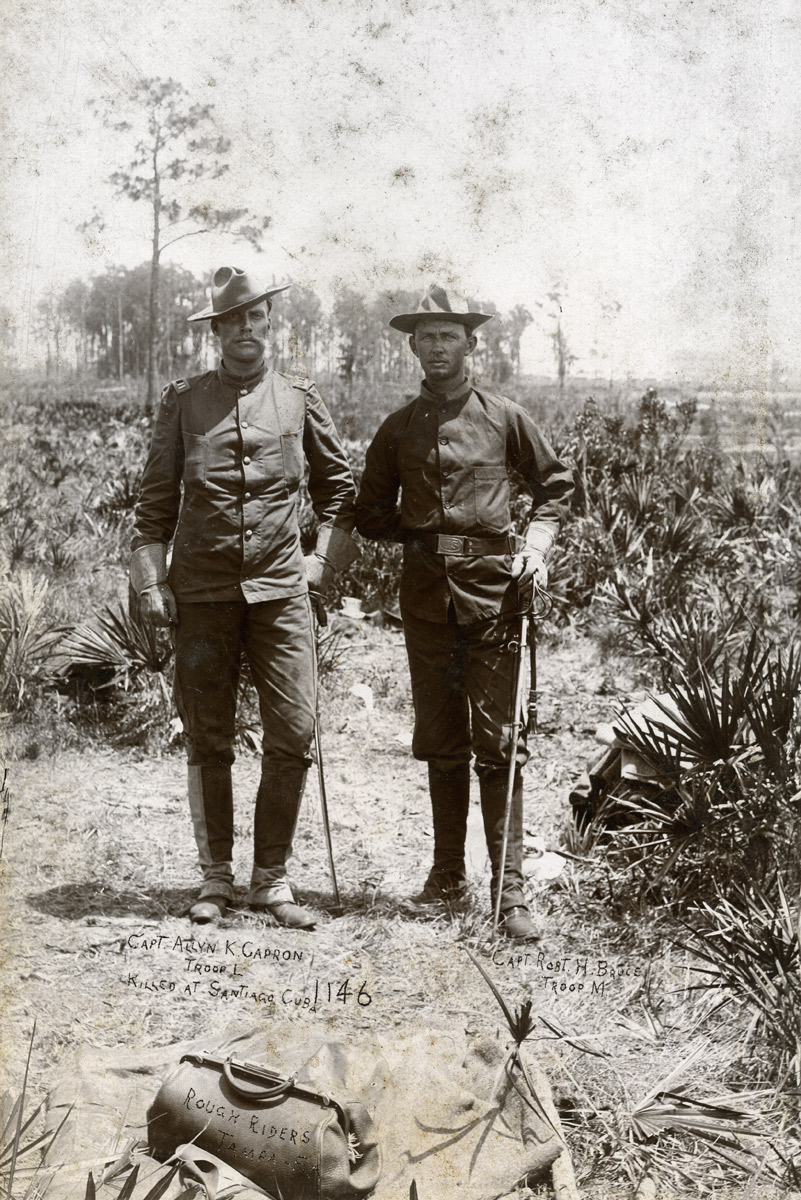CAPRON.
Capron is located in Township 28 North, Range 13 West, Sections 22 and 23, Indian Meridian, four miles east of the intersection of U.S. Highway 281 and State Highway 11 in Woods County. The community was originally known as Warren, a small cattle station on the Atchison, Topeka and Santa Fe Railway, before the opening of the Cherokee Outlet in September 1893. In 1899 the Post Office Department approved changing the town's name to Capron, named for Capt. Allyn K. Capron, commander of an Oklahoma Territorial Rough Rider detachment in the Spanish-American War. The city of Capron was incorporated in 1910. The surrounding economy has always been based on agriculture.
From the beginning, the public school was the focus of the small farming community, which valued having a good education system for its children. In 1894 a small, wood-frame building opened for grades one through eight. By 1909 an expanding population had outgrown the original building, and a two-story facility for grades one through twelve was erected. In 1929–30 this building was torn down and replaced with a new, one-story school and gym. The new school, along with the business district, was destroyed by a tornado in 1939. The 1940 replacement had three additions before the Capron School was closed in 1976 due to declining population and school consolidation. Graduates include Danny Thomson (class of 1966), who played major league baseball for the Minnesota Twins and Texas Rangers in the 1960s and 1970s.
Capron has been a generally prosperous town but has suffered severe setbacks. Many of its children died in a smallpox epidemic in its early days. In the early 1900s a fire destroyed a full block of a prosperous business section. The business community never recovered from the devastating tornado of March 1939.
Capron's population decreased gradually from 196 in 1910 to 147 in 1920, showed a spurt of growth to 212 in 1930, and then continued to decline. By 1990 the number had dropped to 38 residents living in fourteen owner-owned housing units. At the end of the twentieth century Capron's forty-two residents were served by a water building, two grain elevators, a Farmers Co-Op service station, and a United Methodist Church. The 2010 census counted a population of 23. In April 2020 the census found 27 people in Capron.
See Also
Bibliography
Mary W. Erskine and Mildred J. Hager, eds., Woods (M) County, Oklahoma Territory, 1893–1907 (Enid, Okla.: Cromwells, Inc., 1993).
Silbert Lanman, Capron School History, 1874–1976 (N.p.: Silbert Lanman, 1984).
Pioneer Footprints Across Woods County (Alva, Okla.: Cherokee Strip Pioneer League, 1976).
George H. Shirk, Oklahoma Place Names (2d ed.; Norman: University of Oklahoma Press, 1974).
Citation
The following (as per The Chicago Manual of Style, 17th edition) is the preferred citation for articles:
Donna Schwerdtfeger, “Capron,” The Encyclopedia of Oklahoma History and Culture, https://www.okhistory.org/publications/enc/entry?entry=CA053.
Published January 15, 2010
Last updated
March 1, 2024
© Oklahoma Historical Society


